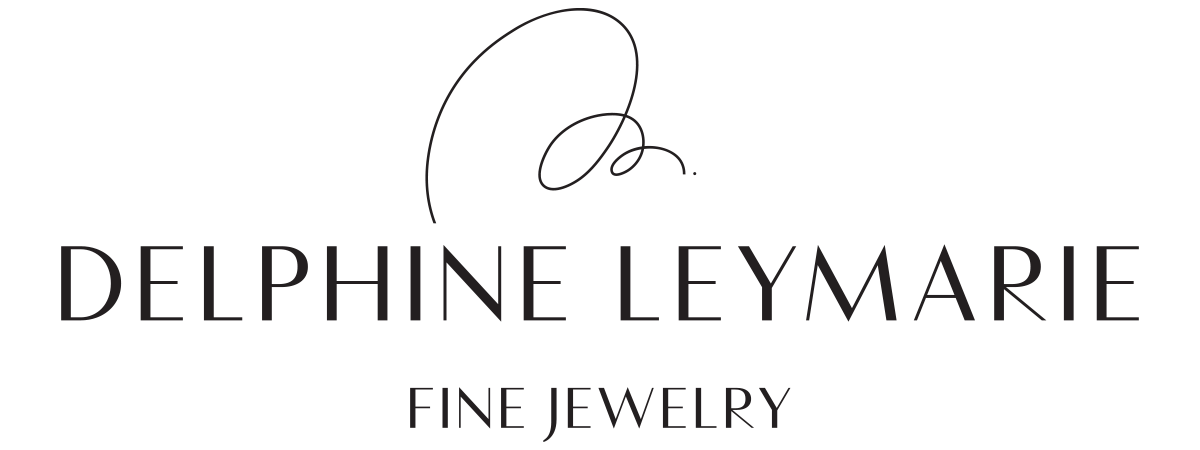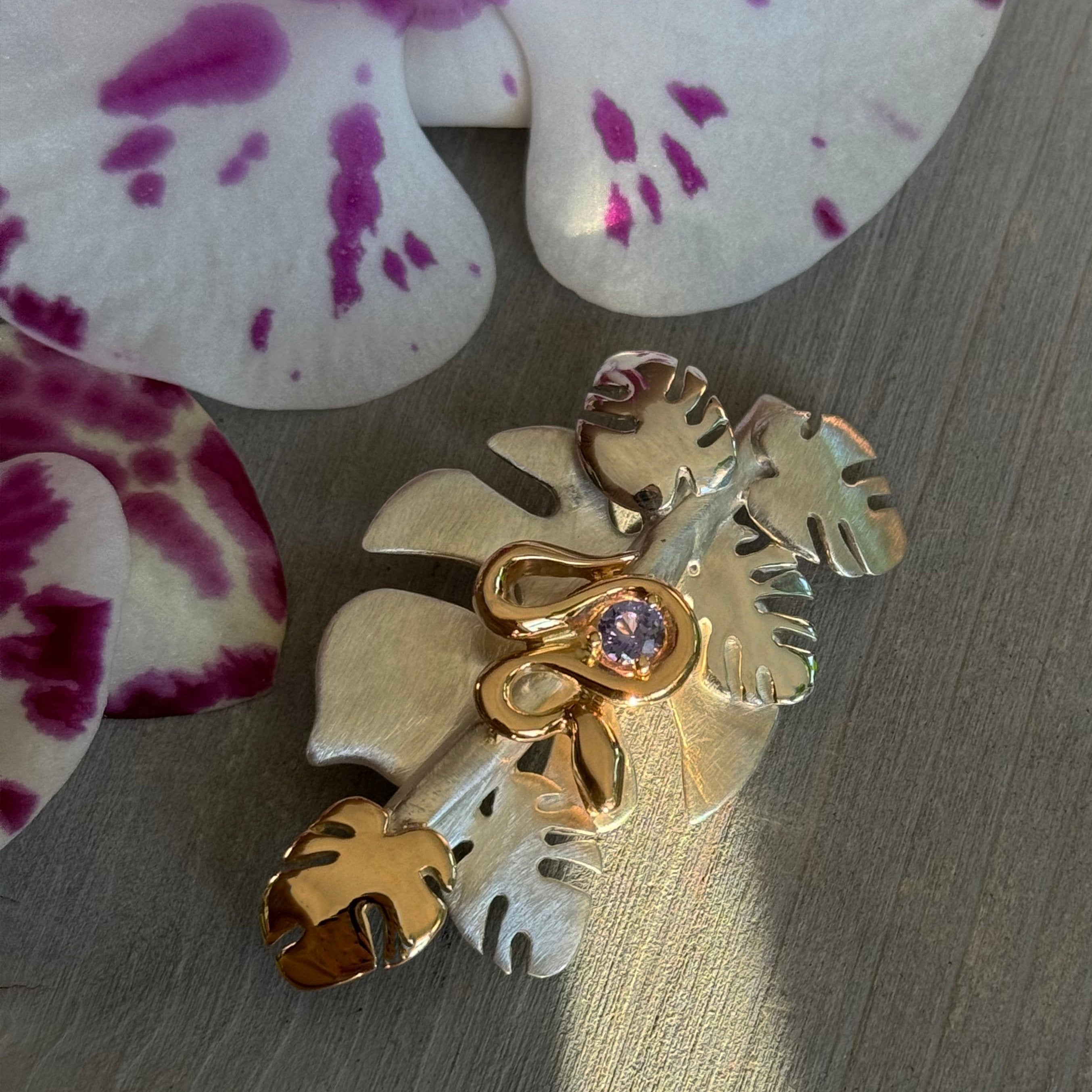
Sustainability in Jewelry: An Ongoing Journey Toward Transparency and Responsibility
Sustainability has become a buzzword in many industries, and jewelry is no exception. From recycled gold to Fairmined precious metals and responsibly sourced gemstones, the conversation around sustainable practices is more important than ever. However, the reality is that sustainability is not a one-time achievement—it’s an ongoing journey. In the jewelry industry, especially for small, independent designers like myself, the path toward sustainability is complex, evolving, and requires continuous effort.
One of the biggest challenges is transparency. A lack of sourcing transparency artificially shields you, the customers, from the true impact of the pollution from mining activities, as you can feel disconnected from the process. Understanding where materials come from and how they are extracted is crucial for meaningful change. This is why at Delphine Leymarie Fine Jewelry, sustainability is not only about reducing harm but about creating pieces with integrity, telling the full story behind the jewels, and striving for progress with each step we take. Together, we can help redefine what true luxury means.
Understanding Sustainability in Jewelry
Sustainability encompasses far more than just eco-friendly materials—it touches on environmental, social, and ethical responsibilities. In jewelry, this means taking a hard look at everything from how raw materials are sourced, to the working conditions of miners, to the energy we use in production, and even how we package our creations for you.

For me, sustainability isn’t just about minimizing harm; it’s also about creating something meaningful and lasting—pieces that resonate with your values, as well as mine. When you invest in a piece of jewelry, you’re not only buying a product, you’re also supporting a process, a story, and a set of ethics.
The Challenges of Sustainability in a Global Supply Chain
Jewelry is an inherently global industry. Our gold and gemstones come from all over the world, often from places where regulations are lax and human rights can be compromised. As a small business, the challenge for us is ensuring that every material is ethically sourced despite the complexity and opacity of the supply chain.
We’ve taken strides by collaborating with trusted partners, using recycled gold, and co-founding Reciprocity Jewels to take our commitment even further. This Fall, we’re proud to introduce collections crafted with Fairmined Gold, sourced in ways that honor both the environment and the miners who bring it to light (learn more about our gold options here).
Yet, the reality remains: the demand for gold outpaces what can be responsibly supplied through recycling and Fairmined efforts alone. This means the jewelry industry as a whole must innovate continuously—and we are committed to evolving alongside it.
The Importance of Collaboration
Sustainability thrives on collaboration. Partnering with organizations like Pure Earth, the Alliance for Responsible Mining, Anza, and Moyo Gems has been crucial in driving positive change. These partnerships ensure that the materials we use support not just our ethical goals but also the communities that mine them.
Our dedication to collaboration is what inspired Reciprocity Jewels—a project born from the desire to reshape the industry through collective action. During NYC Jewelry Week, we showcase a special exhibition where over 20 international designers, myself included, create pieces in partnership with miners from Peru’s Madre de Dios region. These miners, part of the AMATAF collective, are trained by Pure Earth to extract gold without the use of toxic mercury and work to reforest their land, creating a transparent, humanized supply chain that honors both the Earth and the people involved.
In the Andean communities, reciprocity—or awni—is a time-honored tradition, symbolizing the balance between people and the land.
The Andean proverb, “Today for me, tomorrow for you,” speaks to the lasting power of relationships.
Reciprocity Jewels embodies this philosophy, fostering a gold supply chain that is as traceable as it is responsible. Through global collaboration, we celebrate a vision of ethical luxury that benefits all.
Consumer Power in the Sustainability Journey
As consumers, you play a vital role in this journey. The decisions you make when purchasing jewelry can have a far-reaching impact. By choosing pieces from brands that prioritize ethical sourcing and sustainability, you contribute to a more responsible industry. But I believe that sustainability is about more than just the materials we use; it’s also about creating pieces that last—modern heirlooms that will be cherished for generations, rather than fast-fashion items that quickly fall out of favor.

When shopping for jewelry, one of the most powerful things you can do is ask questions. Inquire about the origins of the materials. Where does the gold come from? Are the gemstones responsibly sourced and processed? Does the brand use recycled materials or collaborate with certified ethical mining projects? If not, do they plan to? By asking these questions, you not only gain clarity on your purchase, but you also spark important conversations and push brands to be transparent, ultimately leading to better practices across the board.
And choosing to invest in jewelry that has been thoughtfully crafted rather than mass-produced is another way to support sustainability. Opt for designs that you can see yourself wearing for years to come, and consider pieces that have personal significance—whether it’s a birthstone, a meaningful symbol, or a custom design. These pieces, imbued with emotional value, are more likely to be cared for and passed down as modern heirlooms, reducing waste and promoting a culture of slow fashion.
At Delphine Leymarie Fine Jewelry, we are committed to transparency, and my jewels tell a story of careful sourcing and thoughtful craftsmanship. When you choose to wear my designs, you’re not only wearing jewelry that empowers you—you’re supporting a movement for change.
Together, we can shift the jewelry industry toward a more transparent, thoughtful, and sustainable future.
Progress Over Perfection
One of the hardest lessons I’ve learned on this sustainability journey is that perfection is unattainable. The quest for a completely "clean" or "perfectly sustainable" product is complicated by the realities of production, transportation, and market demand. For example, while we use recycled gold for 99% of our collections, the recycling process itself isn’t free from environmental concerns. The industry is still working to improve the regulation of recycled metals to ensure traceability and ethical practices.
Sustainability is about progress—taking consistent steps toward better practices rather than waiting for the perfect solution. Every time we choose recycled gold, gold responsibly-mined without the use of mercury, Fairmined gold, fully traceable gems like Moyo and Anza gems, or certified post-consumer gem from Perpetuum jewels, we reduce the environmental and social harm. It's not a one-size-fits-all solution, but it’s a step in the right direction.
Looking Ahead: Goals for the Future
The sustainability journey is ongoing, and there is still much work to be done. My goal is to continue pushing the boundaries of what’s possible in ethical jewelry design for my small studio. Starting in 2025, we aim to use at least 5% Fairmined gold in our collections,supporting small-scale miners who are committed to cleaner, safer practices.
Additionally, we’re developing a take-back program to encourage customers to recycle their old jewelry, contributing to a circular economy within our brand. This will not only reduce waste but offer a chance to transform pieces you no longer wear into something new and meaningful.
Finally, we are committed to further improving the traceability of our supply chain, working towards a possible future where every material we use can be tracked from mine to market. By embracing new technologies and continuing to collaborate with partners in the ethical mining space, we are excited to take part in the movement setting a new standard for sustainability in the jewelry industry.
Conclusion: Sustainability Is a Shared Journey
Sustainability is not a static goal—it’s a journey that we’re all on together. As a designer, I feel a deep responsibility to ensure that my work reflects my values of love, respect, and responsibility for the planet and its people. By continuously evolving our practices, collaborating with others, and engaging with conscious consumers like you, we can keep moving forward.
I’m proud of the progress we’ve made, but I know there is always more to learn and do. By supporting brands and partners that prioritize ethical practices, asking questions, and making informed choices, we can continue to work together to shape the jewelry industry so it is as beautiful on the inside as it is on the outside.
With love and gratitude,
Delphine








